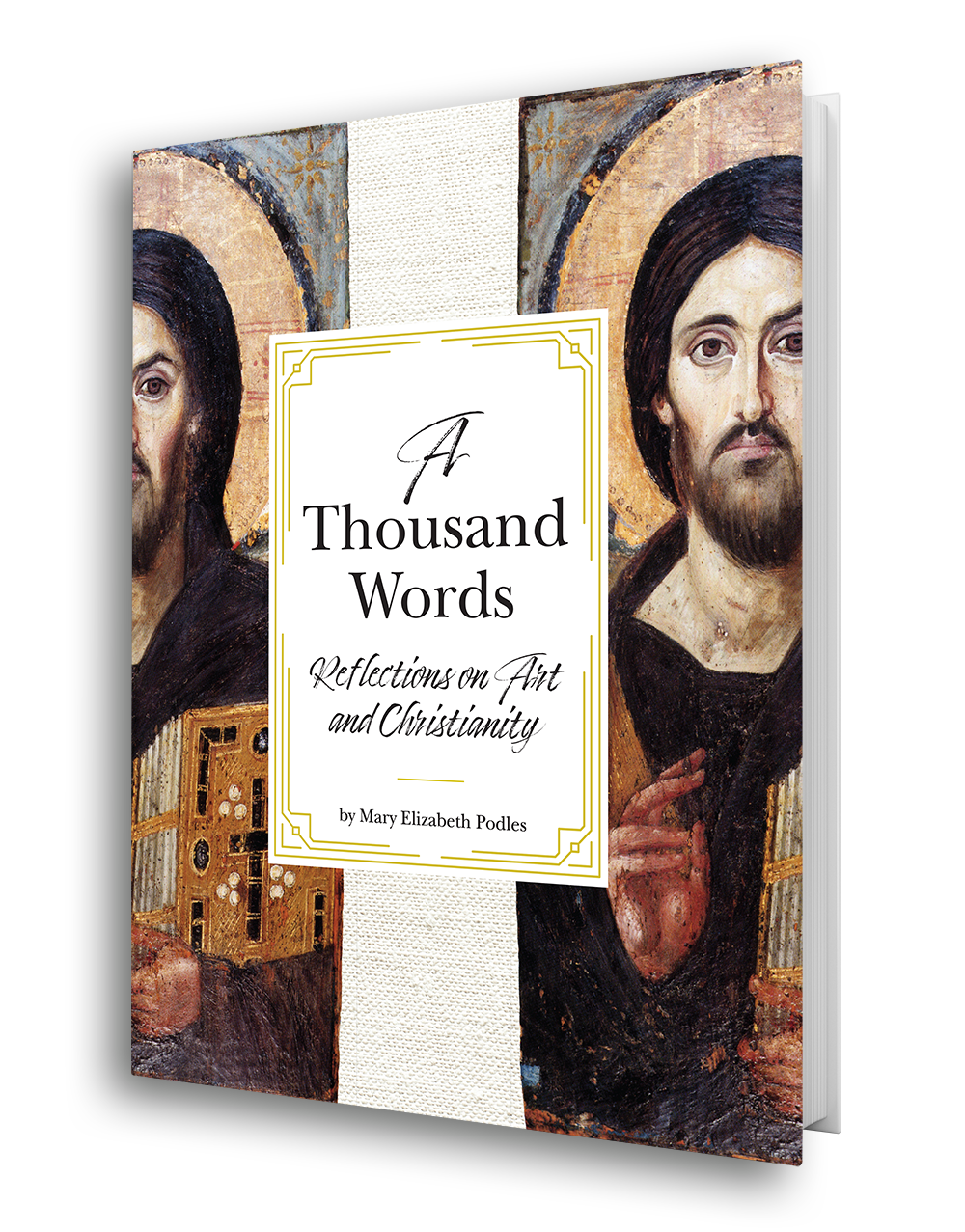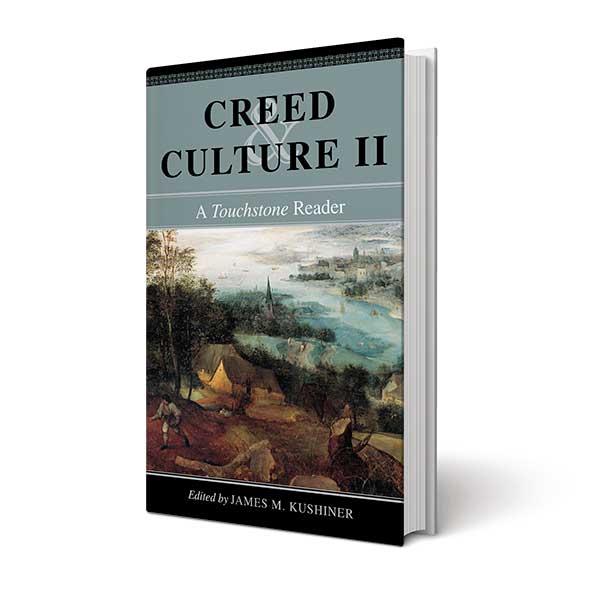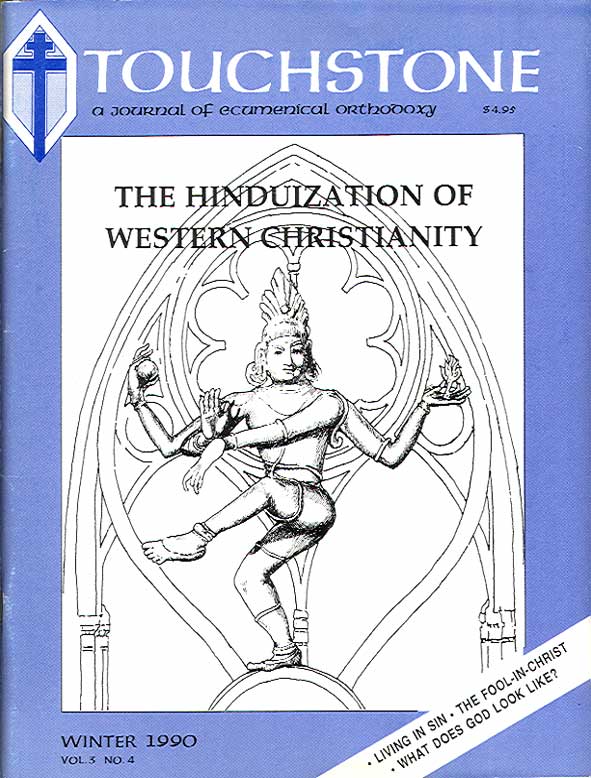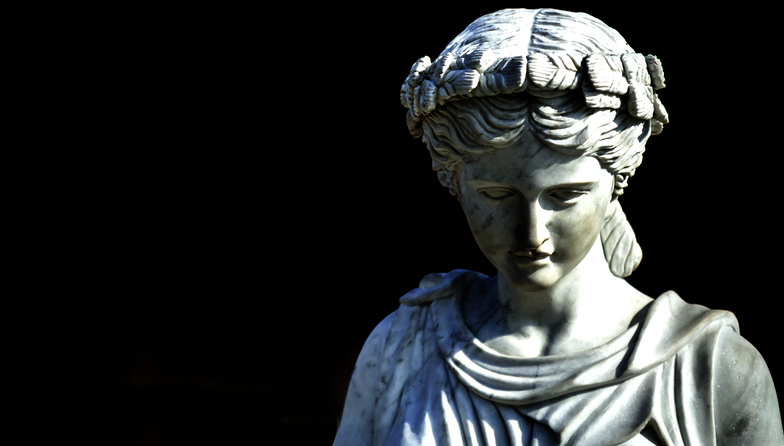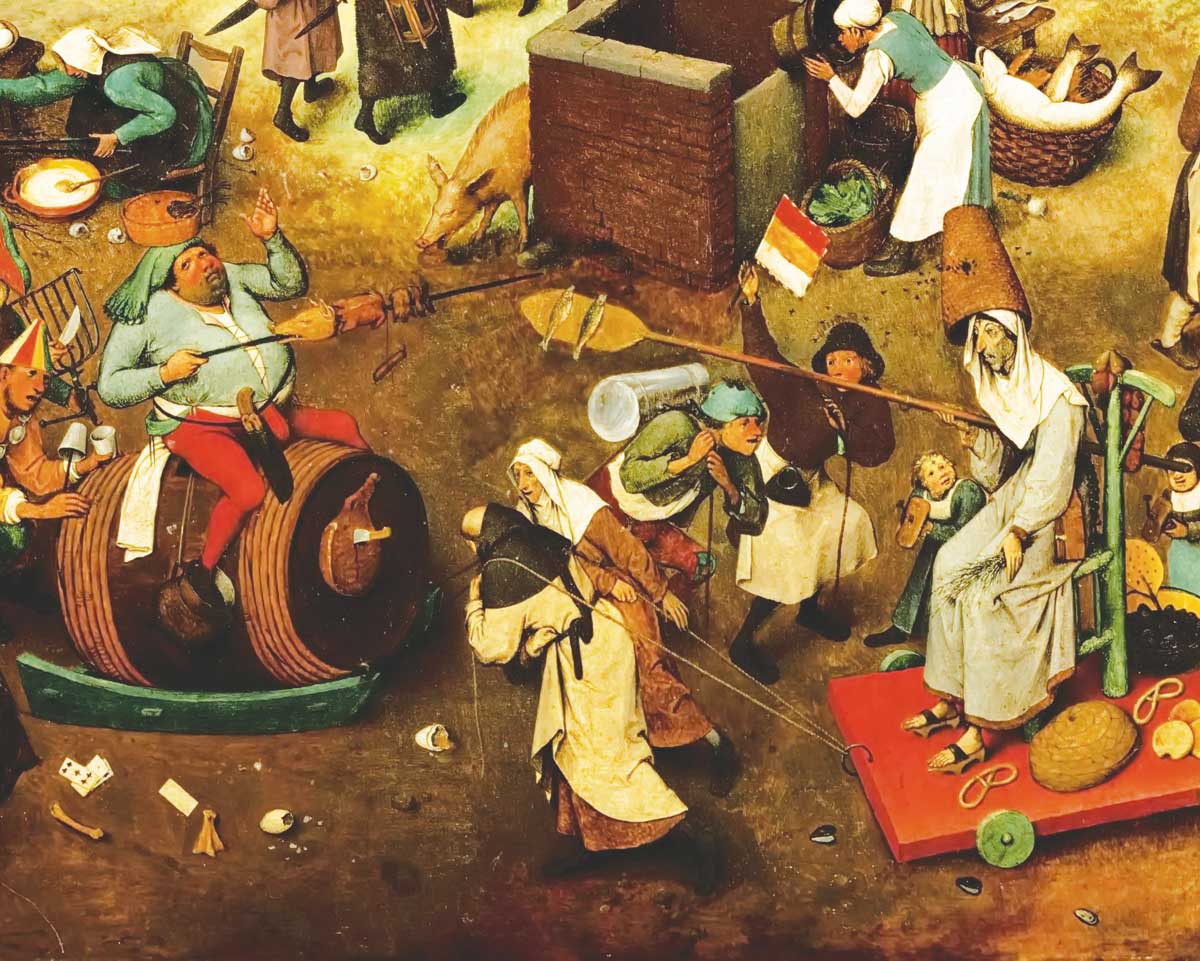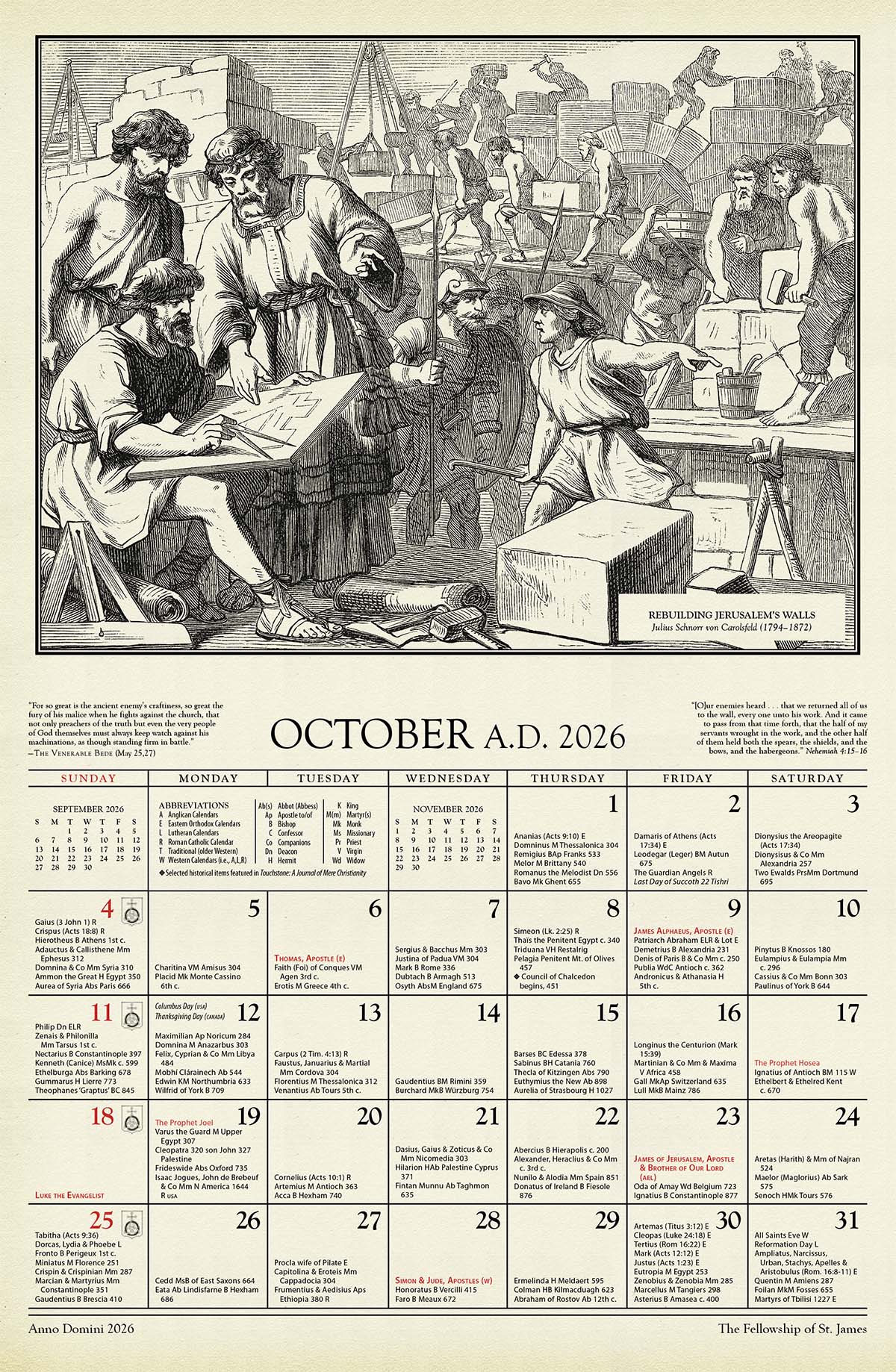Adam, Eve, and the Serpent
Adam, Eve, and the Serpent
by Elaine Pagels
New York: Random House, 1988
189 pp.
reviewed by Leon J. Podles
Scriptural interpretation by the Latin and Greek Fathers of the Church seems far removed from the social and theological controversies of the twentieth century. However, in ecclesiastical circles as in Communist regimes, discussions of the past are often used as a cloak for polemics about modern problems. In the nineteenth century, Catholics and Protestants debated about the nature of the early church in order to demonstrate the continuity of their beliefs with early Christianity. The implicit message was that if Catholic or Protestant beliefs were found in the early church, Catholic or Protestant beliefs were the “true” or “legitimate” form of Christianity.
Elaine Pagels, despite her disclaimer of polemic intent, attempts to demonstrate that the “orthodox” Christianity of the pre-Augustinian church was consistent with feminism, and that (implicitly) the current crop of feminists are the true Christians and their opponents are heretics. This book is another manifestation of the Kulturkampf that is being waged over the central symbols of Christianity. What The Last Temptation of Christ tries to do to the Gospels, Adam, Eve, and the Serpent tries to do to the early church.
Pagels’ explicit thesis is that the variety of theological opinions in the early church about the nature of freedom were reflected in different interpretations given to the story of the Fall. This book is therefore a continuation of the line of inquiry that she took in The Gnostic Gospels. (1979) Her conclusions in Adam, Eve, and the Serpent are:
—the “orthodox” interpretation of the Fall emphasized the freedom of man that continued even after the Fall;
—the Gnostic, “heretical” interpretation of the Fall emphasized the lack of moral freedom of fallen man;
—the church’s “orthodox” doctrine of freedom was a principal cause for the popularity of Christianity. This freedom meant that redeemed man was no longer subject to the tyranny of nature and society. Especially, in virginity women found freedom from the demands of family life;
—Augustine rejected the previous “orthodox” interpretation of human freedom when he said that redeemed man was still unfree. Augustine did this because he read his own sexual struggles into Romans; and
—Augustine’s novel doctrine of original sin became the new orthodoxy because the Church found this doctrine useful in a Christian Empire. A doctrine of man’s freedom and autonomy was useful against a pagan Empire. A doctrine that man was weak, fallible, and unable to govern himself was more useful to an Empire and a Catholic Church that both wanted obedience.
While Pagels does not invent her textual evidence, she does not give her controversial interpretations of the historical material the defence they require. Part of this failure is caused by a lack of thoroughness in her analysis of the history of the doctrine; a part is caused by her unawareness of the feminist implications of her arguments or by her unwillingness to admit that her work has polemic intent (or at least effect).
As the foundation of her analysis of the doctrine of original sin, Pagels appeals to what she regards as the pillars of Protestantism: the two principles of sola scriptura and of the canon within the canon. Sola scriptura means that Scripture alone is authoritative for Christian life. The principle of the canon within the canon means that certain parts of the Scripture are more authoritative or “really” Scripture. This principle allowed Luther to regard Paul’s epistles as normative because they had the “true evangelical savor” but to disregard the epistle of James as “an epistle of straw.”
For Pagels, the “authentic” epistles of Paul contain the “orthodox” message about human freedom. This freedom strongly implies that virginity and celibacy are the best forms of Christian life, because they free man (or more to the point, woman) from the demands of family life, of human society, and of the web of duties that imprison him in a predetermined order. Biology is no longer destiny.
The pastoral Epistles, which praise family life, Timothy and Titus, are dismissed by Pagels as pseudo-Pauline and therefore (implicitly) not authoritative, because they characterize the ideal bishop as a patriarch who rules his family well and therefore proves himself able to rule the family of God, the Church. There are undoubtedly differences of emphasis among the various Epistles attributed to Paul. These differences may be largely explained by the circumstances in which the Epistles were written. Some scholars, especially liberal ones, have questioned whether Paul really wrote all the Epistles attributed to him. Pagels takes this one step further and sees not simply divergent viewpoints, but fundamental contradictions. However, she simply assumes these contradictions, and does not bother to prove they really exist in the Pauline Epistles. A doubtful hypothesis, that the letters attributed to Paul were written by more than one person, becomes the foundation for a very dubious hypothesis, that the presumed authors contradict one another on the matter of family life, which becomes the foundation for her own argument about the earliest conceptions of Christian freedom. Her basic argument is therefore a house built on shifting sands.
With somewhat more justification, Pagels emphasizes the difference between John Chrysostom’s and Augustine’s views of human freedom. However, Pagels claims that Augustine contradicts Chrysostom’s view that Christians have moral freedom and are able to sin or not to sin. Pagels sees a contradiction because she does not have a very clear sense about how doctrines develop.
Almost invariably, controversies and heresies have been the catalyst for the clarification and definition of doctrine. The clearest example is the Trinitarian controversy. It was not until Arius denied the divinity of the Son that the divinity of Christ was defined. It was not until Nestorius denied the true humanity and the true divinity that the hypostatic union was defined.
After the passions of debate died down, the vast majority of Christians accepted the formulations of the dogmas of the Trinity and the Incarnation. But the popular acceptance of these dogmas was not brought about by abstruse argument or even by the exercise of church authority. The faithful always had an inarticulate sense (sensus fidelium) that these dogmas were implicit in the Gospel and indeed central to it: unless the Son is truly God, man is not truly united to God in the Son and is therefore not saved. Unless Christ was truly and fully human and divine, man was still not saved, because what was not assumed was not redeemed.
However, before these doctrines were defined by the early ecumenical councils, many theologians (and even some passages in Scripture) used language that sounds like Arianism, Nestorianism, monotheletism, or other heresies. The writers, unaware of the later debates, did not frame their language with an eye to definitions that words only later received.
Pagels’ chief failure in method is her refusal to take into account the clarification of terms and issues that a debate brings about. The earliest Fathers did not have to confront Pelagianism. They therefore sometimes used language that sounds compatible with Pelagianism. Augustine himself was aware of this situation, and explained to Julianus who had claimed Chrysostom as a Pelagian that Chrysostom was not more guarded in his language because “he was speaking in a Catholic Church and never supposed that he would be understood in any other way [than in an orthodox sense] when no one had raised such a question and he could speak more unconcernedly when you were not there to dispute the point.” (Contra Julianum, 1, 6, 22)
It is curious that Pagels does not mention this passage from Augustine. It certainly indicates that theologians of the patristic era, many of whom were trained as lawyers and rhetoricians, were fully aware of how a controversy leads to the clarification of terms. Pagels in her attempt to examine the history of an idea, that of original sin, does not do a thorough enough synchronic and diachronic analysis; that is, she does not examine the argument at each stage while also showing how the very terms of the argument changed over the course of the debate. This is a temptation of those who try to do the history of ideas in a cursory fashion. The very size of the book (189 pages) warns the reader that the treatment is not thorough.
There are strong feminist undercurrents in this book. Pagels may have chosen not to articulate them because a seemingly detached academic analysis is a better tool for feminism than is an explicitly polemic book. Or more probably, she has simply picked up feminism in the academic atmosphere (Columbia, Bernard, Princeton) she breathes. A glance at any catalogue of academic religious books reveals that feminism is the new orthodoxy, and that to be defensible any Christian doctrine or practice must be shown to be in accord with feminism. Pagels performs this service for the peculiarly Catholic practices of consecrated virginity and celibacy.
Pagels sees Christian virginity and the freedom it brings as an escape from obligation and a form of proto-feminism, an early escape from biological destiny. She sees the doctrine of original sin as an ally of tyranny. But the truth is just the opposite.
Freedom from the law is neither for Paul nor for the early church an escape into a self-creating autonomy, as Pagels thinks. Christian freedom is the assumption of a yoke more demanding, but at the same time, through grace, far sweeter than the law of Moses: the law of the Spirit of self-sacrifice poured forth on the cross. Charity is the form of all the virtues. Virginity can be a type of selfishness, and Augustine said that chastity without charity will burn in hell. Both antiquity and modern writers (such as Henry Chadwick in The Early Church) have recognized that asceticism, including virginity, can be a disguise for self-will. But what others see as a danger and an aberration Pagels sees as the essence of the Gospel. She assumes the truth of the feminist interpretation of Christianity that sees the Christian as an autonomous self that disconnects itself from the web of obligations to love which human nature, especially in its feminine form, tends to create.
Pagels claims that the Augustinian doctrine of original sin buttressed the authority of Church and Empire, and is an ally of tyranny. In a discussion of politics, Pagels says that “throughout western history this extreme version of the doctrine of original sin, when taken as a basis for political structure, has tended to appeal to those who, for whatever reason, suspect human motives and the human capacity for self-government”. (p. 149) Against this view Pagels places the “orthodox” faith in “the hope of human capacity for moral transformation” found in the renowned theological authority Thomas Jefferson and in unnamed political movements and institutions.
The opposite is true. Insofar as the doctrine of original sin has political implications, it is an ally of liberty. Man may be fallen, weak, and unwise, and therefore unable to govern himself. Even less can he be trusted to govern someone else, especially since the fall has made man subject to the libido dominandi, a desire to dominate others that is as strong and consuming as sexual desire. If government is necessary, it should be limited for the good both of the governed and of the governors.
A brief glance at European history shows that the West, heavily influenced by Augustinianism, developed the idea of political liberty in the modern sense. The Orthodox East never appropriated Augustine or assimilated his ideas into its theological development (although the realities behind the Augustinian doctrine may be expressed in different ways); the cultures formed by Orthodoxy have shown an unfortunate predilection for tyranny, and movements for political liberty have Western secular origin rather than a religious basis. A comparison of Orthodox Romania and Catholic Poland confirms that this difference still exists. The framers of the American Constitution inherited the Calvinist distrust of human nature. This distrust was confirmed by their experience of George III and his ministers, whom they suspected of having a libido dominandi that would reduce the American colonists to servitude. Both theology and political experience led them to establish a system of government that restricted the opportunity for one person, group, or region to dominate others. What Pagels seems to mean by self-government, although she has apparently not thought it out, is a utopian self-creation of human nature (such as in Marxist revolution) which often ends in the most tyrannous deprivations of liberty and dignity.
As a Westerner and a Roman Catholic formed by a pre-Vatican II spirituality stemming from Augustine, I am no doubt in Pagels’ view guilt-ridden; but I have felt no temptation to determinism. The teachings of the Western church on original sin are entirely consistent with a strong sense of human freedom. However, I feel that the doctrine gives me a healthy skepticism about my use of that freedom. Freedom is better than determinism either by natural forces or political tyranny; but it is easily misused. Christians can sin rather spectacularly, and would do well never to forget that the Christian is at once saved and a sinner, simul justus et peccator.
The abolition of many church disciplines after Vatican II threw the Roman Catholic church in the West into an orgy of silliness, abandonment of moral standards, and heresy. Even the abolition of hated tyranny has a dark side. The East Germans who have flocked to West Germany headed for the prostitutes and porn shops; one of the first acts of revolutionary Romania was to legalize abortion. Augustine would not be surprised. Self-government is the worst system of government—except for all the rest. The problem is not in the political system, although some are worse than others, because they give more opportunities for tyrants, but in man himself.
More profoundly, Pagels is wrong about Augustine’s theology of original sin because she fails to see that it is the converse of the glory of the Redemption. Christ came to save sinners; He saves only sinners. He came to save each person as much as he came to save all. The gravity of the sin from which Christ saves man is reflected in the Crucifixion and the Descent into Hell. Since Christ came to save the newborn child as much as the hardened sinner, the seriousness of original sin, the only sin that can possibly exist in the child, is mirrored in the price paid to cleanse him from it: the death by torture of the Son of God.
This is why Western Christians have accepted Augustine’s central formulations as true. They have seen in the dark picture of human nature that Augustine drew the negative image of the great salvation they had received. Christians were not duped by a Roman Church intent on tyrannizing them, nor were they misogynists intent on restricting the freedom of women. Like all revisionist versions of Christianity, Pagels’ also falls short of the truth “greater than which nothing can be thought.” In return for the mysterious tragedy and glory of the human story that Christianity reveals, she offers only a delusory self-creating autonomy. As Chrysostom might have said, “‘Ye shall be as gods,’ the Tempter still whispers.”
Leon J. Podles holds a Ph.D. in English from the University of Virginia, has worked as a teacher and a federal investigator, and is president of the Crossland Foundation. He is the author of The Church Impotent (Spence), Sacrilege (Crossland Press), and Losing the Good Portion: Why Men Are Alienated from Christianity (St. Augustine Press). Dr. Podles and his wife have six children and live in Baltimore, Maryland. He is a senior editor of Touchstone.
subscription options
Order
Print/Online Subscription
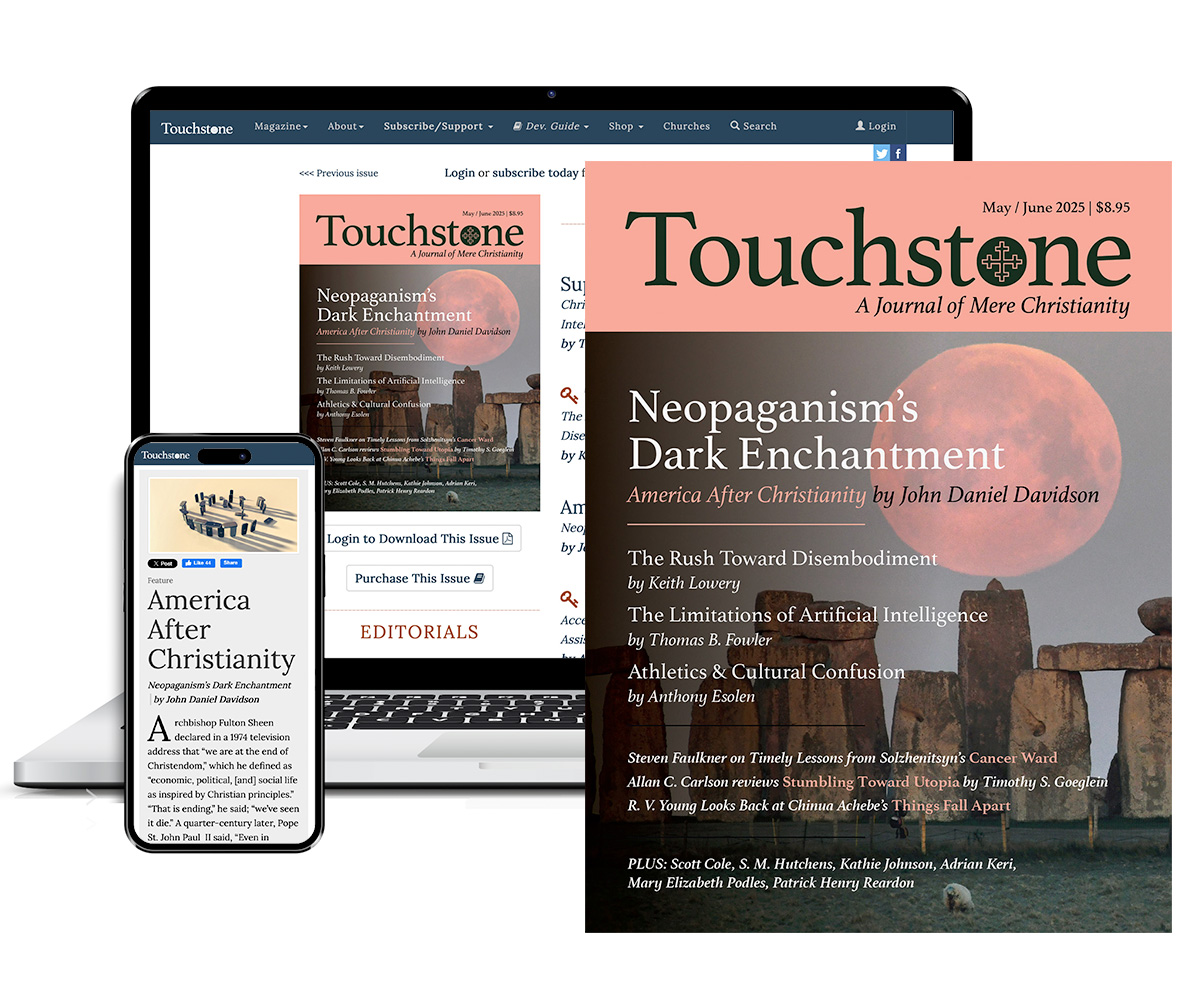
Get six issues (one year) of Touchstone PLUS full online access including pdf downloads for only $39.95. That's only $3.34 per month!
Order
Online Only
Subscription

Get a one-year full-access subscription to the Touchstone online archives for only $19.95. That's only $1.66 per month!
bulk subscriptions
Order Touchstone subscriptions in bulk and save $10 per sub! Each subscription includes 6 issues of Touchstone plus full online access to touchstonemag.com—including archives, videos, and pdf downloads of recent issues for only $29.95 each! Great for churches or study groups.
Transactions will be processed on a secure server.
more from the online archives
calling all readers
Please Donate
"There are magazines worth reading but few worth saving . . . Touchstone is just such a magazine."
—Alice von Hildebrand
"Here we do not concede one square millimeter of territory to falsehood, folly, contemporary sentimentality, or fashion. We speak the truth, and let God be our judge. . . . Touchstone is the one committedly Christian conservative journal."
—Anthony Esolen, Touchstone senior editor



